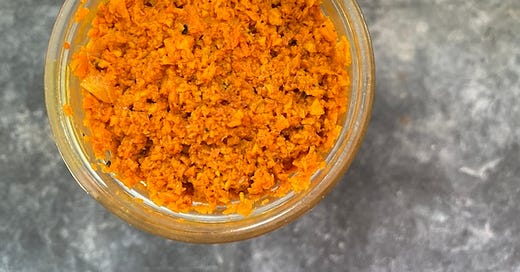I hope this finds each of you well, warm, dry, safe whatever the case may be. I spent the week writing to you about our relationship with water here on our little patch of mountainside, because while in the rest of the country all water turned to ice we were warmish with much needed rain. It was one of those times while writing that I had so much to say but the words just didn’t land, didn’t paint the picture, and I realized I need to sit with these emotions longer until I find the right words. Mostly there became too many and waxing on about buckets of rain really has nothing to do with today’s topic.
I want to welcome all of you who are here as part of the 30-day Fermentation Challenge. I have enjoyed hearing from some of you via email and in the TFS community thread. This is a paid subscription post where I share videos, more recipes, and dive deeper into various topics regarding fermentation. As a current subscriber, you have access to the archive of last year’s posts. Some popular posts were about natto and bone health, (with a video on how to make), histamines and fermented foods, and citrus with some winter recipes.
Today, we will talk about turmeric, specifically fermented turmeric.
I began fermenting fresh turmeric root many years ago as I rarely saw it in markets or grocery stores, where I am this has changed and turmeric is regularly available alongside ginger root. I had some concept of it being a “healthy” food but my motivation was all about preserving the rich flavor and extending my access to the brightness of the fresh root versus the dried powder. I like using both in cooking but there is a huge difference. Sometimes I want the more subdued almost musty flavor of the dried and other times I want the sunny, slightly peppery, lightness of fresh.
Turmeric became one of the first flavors in my fermented “spice rack” which is what I affectionately call the powerfully flavored small ferments that we usually find in a spice drawer or cabinet—things like fermented basil leaves, fermented ginger, fermented chimichurri, fermented garlic paste (oh saves so much time!) and so on. I see these fermented ingredients as just that—ingredients. Larder staples that can be dashed into a sauce, soup, salad, or whatever I happen to be cooking for quick, easy, convenient flavor.
Keep reading with a 7-day free trial
Subscribe to Fermenting Change to keep reading this post and get 7 days of free access to the full post archives.





